Wedges 101
Bounce is a critical element of a wedge, but one that is typically ignored or misunderstood. Today, I’m going to explain what bounce is, why you need it, and why having the right amount is critical for good wedge play.
What Is Bounce?
Here’s the technical definition: the angle between the ground and a line drawn between the sole’s contact point and the leading edge. Think of it this way – if you sole the club and the leading edge is right on the turf, you probably have very low bounce. If the leading edge is noticeably elevated, you probably have quite a bit.
Bounce goes hand in hand with sole width: a wider sole has more effective bounce than a thinner sole. For example: if two wedges have 4 degrees of bounce, but one has a very wide sole and one has a very thin sole, the wide sole wedge will play like it has more bounce.
What Does Bounce Do?
Bounce is built into the club to prevent it from digging into the ground. A club without any bounce would act like a shovel when it hit the dirt.
Bounce does NOT make the club bounce off the turf. However, bounce does elevate the leading edge of the club which can, in theory, make it more likely that you will hit a shot thin or blade it.
We don’t want the club to dig, but we also don’t want to blade our chips. This is why getting the right amount of bounce is critical.
Matching Bounce to Your Swing
The first step in finding the right amount of bounce is to understand your swing, specifically your angle of attack. The best way to find the right wedges is with a qualified wedge fitter. They will be able to take in a variety of information – launch monitor data, divot patterns, and your feedback – and guide you towards the wedges that will work best for you.
The other way to find out how much bounce your swing needs is simple trial and error. The only difficulty with this is finding a pro shop that will let you take a variety of wedges out onto real grass.
Matching Bounce to Your Conditions
In addition to knowing how much bounce your swing requires, you’ll want to consider the conditions that you play in. If you play in an area with soft or wet turf, you’ll need more bounce. Conversely, if you play in hard, dry conditions, less bounce is required.
In addition to considering the turf conditions, you’ll want to think about the sand, at least for your primary sand wedge. The bunkers at my local courses don’t have a lot of sand, and the sand is usually packed. This is a recipe for a sand wedge with less bounce. If you have the privilege of playing at courses with lots of fluffy sand, you’ll want more bounce to avoid getting stuck.
Grinds: What’s the Point?
If that’s not enough to consider, there’s also the world of sole grinds. There are many names for grinds, as well as plenty of jargon, but it all boils down to shaping the sole of the wedge to suit a player’s needs.
Here’s an example: you may be a player who needs a lot of bounce in your wedges, but if you like to open up your wedges for high pitches and flops, that bounce becomes counterproductive. To get the best of both worlds, you can get a wedge that has a “C Grind” – a grind that removes material from the heel, toe, and trailing edge to keep the leading edge low when you open it up.
To determine if you need a special grind, consider how you use each wedge and whether or not your current wedge is limiting your ability to hit all your shots.
The Payoff
If you’ve stayed with me this whole way, you’re probably thinking, “That’s a lot to consider. Why should I do this?” The reason is simple: having a set of wedges with the right bounce and grinds can unshackle your short game and lead to lower scores.
He founded Plugged In Golf in 2013 with the goal of helping all golfers play better and enjoy the game more.
Matt lives in the northwest suburbs of Chicago with his wife and two daughters.
- Sunice Golf Apparel Review - December 12, 2025
- Scotty Cameron Phantom 11 Putter Review - December 11, 2025
- PXG Lightning Tour Driver Review - December 10, 2025

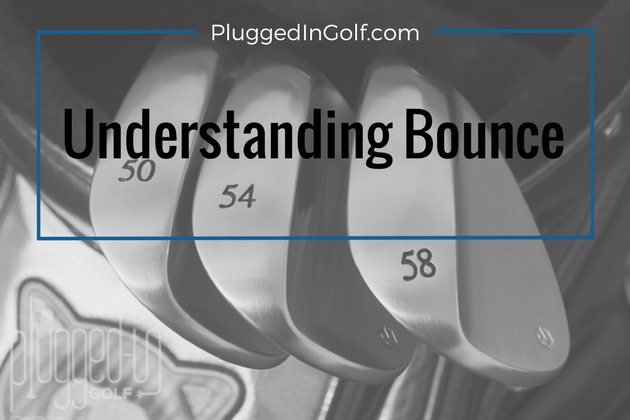
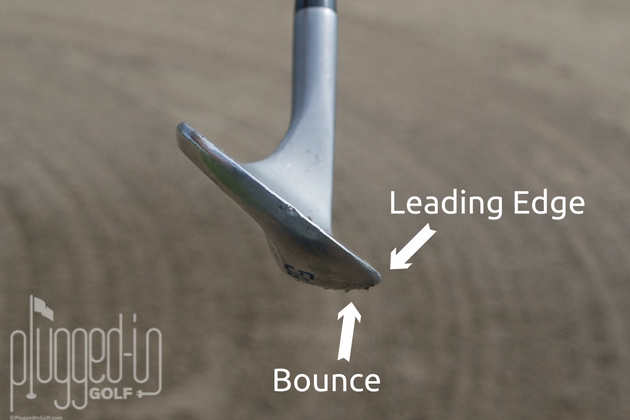
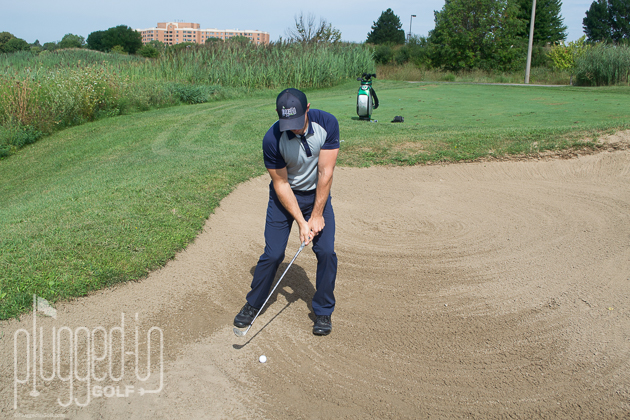
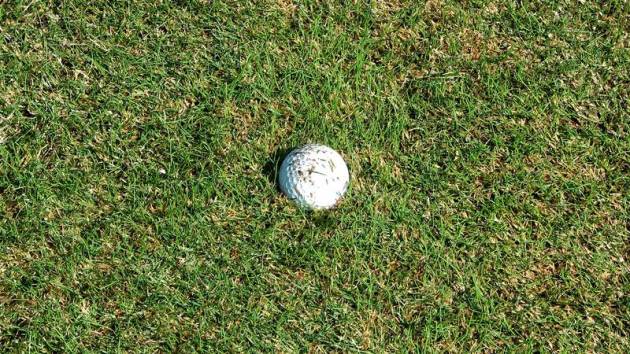
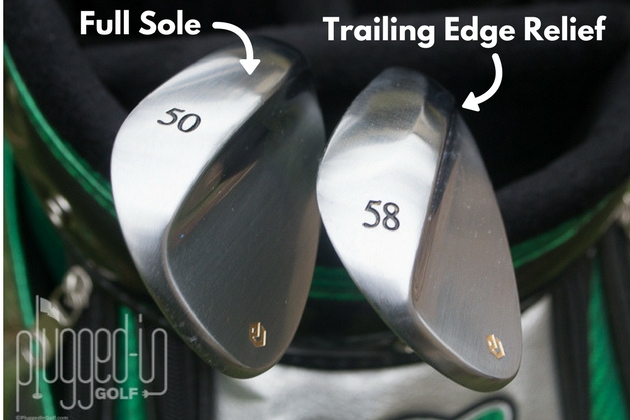
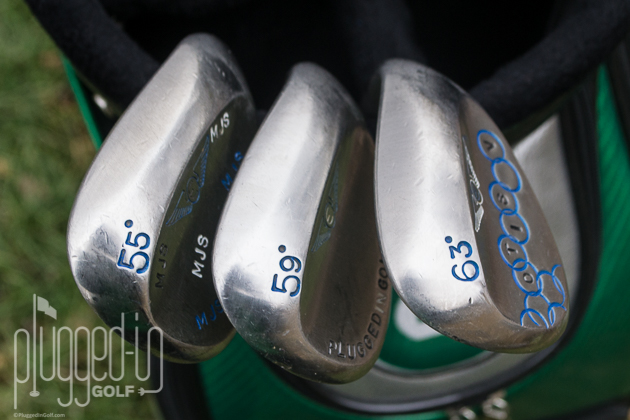







14 Comments
What would a Taylormade atv wedge be considered. I use my 60 atv wedge all around the green.
Robin,
The ATV is just a wedge with a sole grind (an effective one for you, I assume). TaylorMade’s description that “there’s no bounce angle because bounce changes as you manipulate the club” is true of any wedge.
Best,
Matt
Hi Matt, I play in the Middle East and the fairways particularly in summer are very hard. I play a 54 and 60 degree wedge. What bounce would you recommend most effective especially off the fairways? Also, how often would you recommend the wedges should be changed? Note we get to play quite a bit and there is a lot of sand, which I imagine is tough on the grooves. Cheers, Neil
Neil,
Turf conditions are half of the question, the other half is your swing. Hard fairways lend themselves to less bounce, but steep swings need more bounce.
I would change out wedges when you notice a decline in performance. This is easy to check with a trip to a launch monitor at the beginning and end of the year – just see what kind of spin you’re getting on your shots, particularly shots with a wet or dirty club face.
Best,
Matt
Matt, what kind of wedges do you prefer being in the Chicago area? Generally the sand around here is construction grade and fairly packed. What kind of sand wedge do you prefer in those conditions? What about our Midwest fairways and rough? What kind of gap or lob wedge bounce as a general rule for an average golfer in average Chicago public course conditions?
Mark,
For firm sand, you want less bounce.
Overall, I find the conditions in Chicago to be middle-of-the-road but variable. In summer heat, things can get firm. A few days of rain in the fall and things get soft. As such, I prefer to think about matching the bounce to the player’s swing (steep AoA = more bounce, shallow AoA = less bounce).
If you want a brand recommendation, I really like Edel. I think their fitting system is second to none. Check out Matt Jones, Edel’s Chicago fitter, or Club Champion.
Best,
Matt
Do you buy the sole grind for full swings or for short pitches and chips around the greens (shots inside 30 yards)?
John,
Ideally the grind you select should allow you to hit a wide variety of shots. For example, if you have a grind that takes material off the trailing edge and heel, that should have minimal impact on full swings but add versatility for opening the face on short shots.
Best,
Matt
Ping i-200 irons typically have about 4 degrees more loft than competitors. Are the 9-gap wedge more difficult to chip with and hit full shots from firm fairways?
George,
I think you mean 4 degrees more bounce. I found no difficulty in hitting them from a variety of conditions. Bounce is just one part of the equation. You need to also look at sole width and sole shape.
Best,
Matt
What type of bounce do you recommend for a picker/ sweeper swing? I’m located in SE Kansas.
Larry,
Generally a shallow swing requires less bounce, but the best thing to do is work with a fitter to find out for sure.
Best,
Matt
If you like to play games, challenge yourself with a variety of shots around the green (inside 40 yards), would you recommend more or less bounce?
Bill,
More or less than what? Also, it depends on the conditions and your swing type. Softer conditions call for more bounce.
Best,
Matt